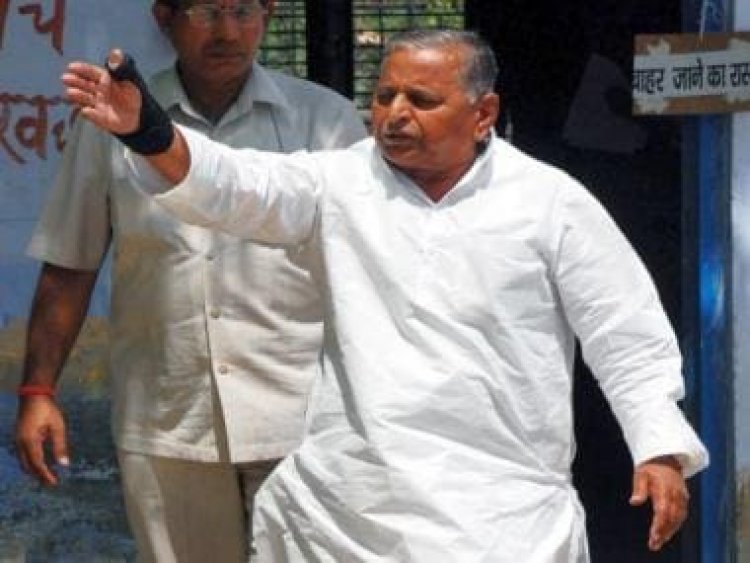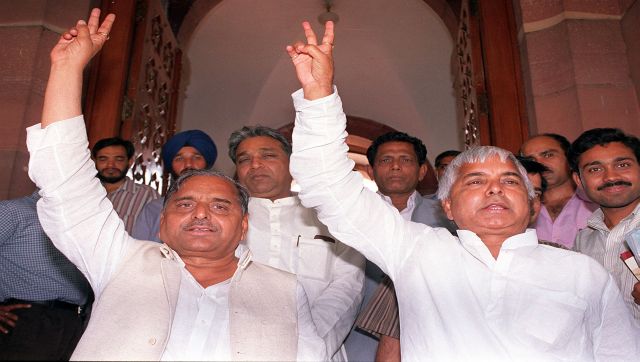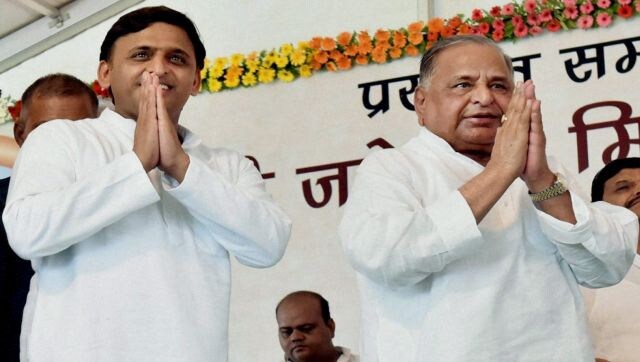RIP Netaji: How Mulayam Singh Yadav wrestled his way into politics and became a political icon
RIP Netaji: How Mulayam Singh Yadav wrestled his way into politics and became a political icon

After spending days in the Intensive Care Unit at Medanta Hospital in Gurugram, Samajwadi Party patriarch Mulayam Singh Yadav passed away on Monday morning at the age of 82.
- Catch all the live updates from Mulayam Singh Yadav’s passing away HERE
His son, Akhilesh Yadav, confirmed the news of the leader’s death on Twitter.
मेरे आदरणीय पिता जी और सबके नेता जी नहीं रहे – श्री अखिलेश यादव
— Samajwadi Party (@samajwadiparty) October 10, 2022
With Netaji’s loss, as he was popularly called by his supporters, India loses a veteran political leader and a man with experience of coalition governments.
Mulayam’s early life
Mulayam Singh Yadav was born to Murti Devi and Sughar Singh on 22 November 1939 in Saifai village of Uttar Pradesh’s Etawah district.
Mulayam, who earned three degrees in political science — started his professional career as a teacher at Jain Inter College in Mainpuri district’s Karhal.
He also used to dabble in wrestling in his youth, which is how he got into politics. According to reports, in the early ’60s when Mulayam was in his 20s, Nathu Singh, a Socialist Party MLA from Jaswant Nagar in Etawah spotted him during a wrestling tournament.
Singh was impressed by the short but study Mulayam, who had the ability to defeat his stronger opponents. When Singh found out that the young man was also educated and teaching at a college, Singh took him under his wing and mentored him. Thus, began the political life of Mulayam Singh Yadav, aka Netaji.

Mulayam’s foray into politics
In the Uttar Pradesh Assembly elections of 1967, Singh stepped aside and allowed his protégé Mulayam to contest the polls from Jaswant Nagar.
Mulayam proved his political mettle by winning those polls and became an MLA for the first time at the age of 27. Ten years later, he became a state minister.
During the period of Emergency, Mulayam Singh Yadav was arrested and kept in custody for 19 months.
Later, in 1980, he became the president of the Lok Dal (People’s Party) in Uttar Pradesh which became a part of the Janata Dal (People’s Party) afterwards.
He became chief minister of Uttar Pradesh for the first time in 1989 as a leader of the Janata Dal. However, his government fell in April of 1991 and in the following year, Mulayam Singh Yadav founded the Samajwadi Party.
#WATCH | From ANI archives - The life and times of Samajwadi Party supremo and former Uttar Pradesh CM Mulayam Singh Yadav pic.twitter.com/Ze40gJoero
— ANI (@ANI) October 10, 2022
SP chief and his politics
Mulayam Singh was able to establish himself as an OBC stalwart, capturing a swathe of political space vacated by the Congress. He advocated reservation for the backward castes, doled out welfare schemes, and maintained secular credentials.
Riding on a Muslim-Yadav political formula, Mulayam Singh Yadav captured the chief minister’s chair in 1993. Interestingly, one of his first acts after taking over as the chief minister was to abolish the Anti-Copying Act introduced by the previous BJP government. The measure was meant to be a SOP to the student community.
Mulayam was elected to the Lok Sabha for the first time in 1996 polls and served as the defence minister in the United Front governments led by HD Deve Gowda and, later, IK Gujral. He also contested successfully a number of subsequent Lok Sabha elections, including the 2019 polls, from various seats across UP.
In 1999, after Atal Bihari Vajpayee’s government fell by just one vote and Congress’ Sonia Gandhi appeared all set to lead a coalition, it was Mulayam Singh who raised the issue of her non-Indian origin, which haunts her till date.
In his third stint as chief minister of Uttar Pradesh (2003-2007), he introduced several social welfare schemes and also handed out an unemployment allowance of Rs 500 per month. He also introduced a ‘Kanya Vidya Dhan’ scheme to help poor girl students — a program that his son revived after he became chief minister in 2012.
Mulayam was also known to be a strong advocate of the use of Hindi language and often spoke out against English. In the 2009 Lok Sabha elections, the SP’s manifesto spoke against ‘expensive English education’ and in 2013, he sought a ban on the use of English in Parliament.

Mulayam Singh and the Ayodhya firing
Perhaps one of the biggest controversies dogging Mulayam Singh Yadav is the firing on kar sevaks marching towards Ayodhya in 1990.
On 30 October 1990, lakhs of kar sevaks from across the country had assembled in Ayodhya for the construction of a temple at the disputed Ram Janambhoomi-Babri mosque site. Despite the heavy security presence and cordoning off the area, the kar sevaks marched towards the site. It was then that the police received orders from then Chief Minister Mulayam Singh Yadav to open fire at the karsevaks. The firing led to chaos and stampede.
While Mulayam claimed 28 people had lost their lives in the firing, other claimed the toll was higher at 56. The incident earned him the title of ‘Mullah Mulayam’, but the former UP chief minister was steadfast in his belief that the firing was needed.
In 2017, addressing his supporters on his 79th birthday, Mulayam Singh Yadav justified his order to open fire at kar sevaks. He had then said “if more people were required to be killed for the country’s unity and integrity, the security forces would have done it.”

The family feud he couldn’t stop
In 2012, as the state was headed to polls again, a 73-year-old Mulayam Singh passed on the baton to his son, Akhilesh, who had, till then, played a role from the sidelines.
However, with the rise of his son, came the fault lines within the party. In the years that followed, Mulayam Singh Yadav saw a bitter war of succession between Akhilesh and his brother, Shivpal Singh Yadav.
It remains unknown till date if Mulayam sided with his brother or son in the battle.
In fact, Mulayam once told News18, “Running a party of this scale is not an easy task. It is Lord Shiva’s baraat, where you need immense patience and articulation to manage the heads.”
With inputs from agencies
Read all the Latest News, Trending News, Cricket News, Bollywood News,
India News and Entertainment News here. Follow us on Facebook, Twitter and Instagram.
What's Your Reaction?



























































